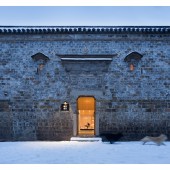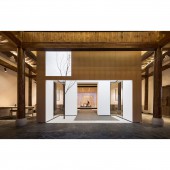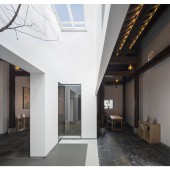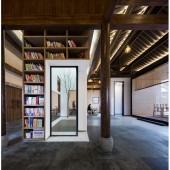
| THE AWARD |
| CATEGORIES |
| REGISTRATION |
| SUBMIT YOUR WORK |
| ENTRY INSTRUCTIONS |
| TERMS & CONDITIONS |
| PUBLICATIONS |
| DATES & FEES |
| METHODOLOGY |
| CONTACT |
| WINNERS |
| PRESS ROOM |
| GET INVOLVED |
| DESIGN PRIZE |
| DESIGN STORE |
| THE AWARD | JURY | CATEGORIES | REGISTRATION | PRESS | WINNERS | PUBLICATIONS | ENTRY INSTRUCTIONS |
Jiangshan Fishing Village Renovation by Ziye Wu |
Home > Winners > Design #68636 >Interview |
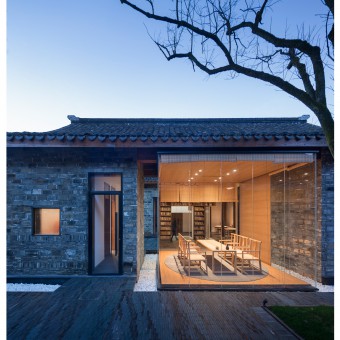 |
|
FS: What is the main principle, idea and inspiration behind your design?
ZW: Keeping the maximum original form of old house, the design breaks the closed functional space, integrates the indoors and outdoors, emphasizes the construction contracts between the old and new, and breaks the limit of material application. It blends several contradictions but it finally become a logical work from concept to design and construction.
FS: What has been your main focus in designing this work? Especially what did you want to achieve?
ZW: The design keeps the rare existing old houses, brings about the necessary public activity space, so as to present the charm and characteristics of the transformed old house to the local residence.
FS: What are your future plans for this award winning design?
ZW: Based on the feedback village renovation practice, we plan to continue our practice on this field. In the same time, we’ll try digitized wood architecture in some small public architecture, as well as modularization space reconstruction based on 3D printing.
FS: How long did it take you to design this particular concept?
ZW: It took about a month to design an object from beginning to end.
FS: Why did you design this particular concept? Was this design commissioned or did you decide to pursuit an inspiration?
ZW: Were commissioned by the Jiangshan Fishing Village in Gaochun of Nanjing to meet the basic needs of indigenous peoples for modern functions and cultural life, and formulated a rural renewal plan.
FS: Is your design being produced or used by another company, or do you plan to sell or lease the production rights or do you intent to produce your work yourself?
ZW: We design the project all by our team.
FS: What made you design this particular type of work?
ZW: Through a consistent treatment on function, space, material and structure, the design expresses the contradiction of the old and new parts. It has changed the villagers’ stereotypes on old house.
FS: Where there any other designs and/or designers that helped the influence the design of your work?
ZW: It is the first project by Mix Architecture, which is an urban renovation project located in Nanjing. The original building is an abandoned building with only the concrete structure. We finally made it a show center of a commercial residential project.
FS: Who is the target customer for his design?
ZW: The target customers are the local villagers.
FS: What sets this design apart from other similar or resembling concepts?
ZW: Mirror surface is used on the connection between the old and new materials, which fulfill the idea of contrast and boundlessness of the old and new in space experience and design logic. It presents a good result at last.
FS: How did you come up with the name for this design? What does it mean?
ZW: The name is based on the project location and project type.
FS: Which design tools did you use when you were working on this project?
ZW: Most are traditional tools like AutoCAD, Sketch up, Rhino and handmade model.
FS: What is the most unique aspect of your design?
ZW: It has a social impacts on the village renewal plan in China, which makes it special.
FS: Who did you collaborate with for this design? Did you work with people with technical / specialized skills?
ZW: I worked with my team members of Mix Architecture.
FS: What is the role of technology in this particular design?
ZW: Technology makes the design more effective.
FS: Is your design influenced by data or analytical research in any way? What kind of research did you conduct for making this design?
ZW: We are inclined to study the traditional and local materials and technology. We tried to use traditional materials in a new way.
FS: What are some of the challenges you faced during the design/realization of your concept?
ZW: Actually, when we take over the mapping, the old house has been renovated once simply. Some old roof truss and components have been changed or destroyed. So the biggest challenge is to restore the original structure, which is a basis to show the difference between the old and new part.
FS: How did you decide to submit your design to an international design competition?
ZW: It is a way to make it known for more people, and wining the award is an encouragement to us.
FS: What did you learn or how did you improve yourself during the designing of this work?
ZW: We focus more on interaction, experience, the logic of construction and the true express of material. And simplify problem is vital in design.
FS: Any other things you would like to cover that have not been covered in these questions?
ZW: Thanks to the recognition from A' Design Award & Competition. It is a great encouragement to our studio as a platinum award winner. It will encourage us to make more exploration in design in the future.
FS: Thank you for providing us with this opportunity to interview you.
A' Design Award and Competitions grants rights to press members and bloggers to use parts of this interview. This interview is provided as it is; DesignPRWire and A' Design Award and Competitions cannot be held responsible for the answers given by participating designers.
| SOCIAL |
| + Add to Likes / Favorites | Send to My Email | Comment | View Press-Release |

